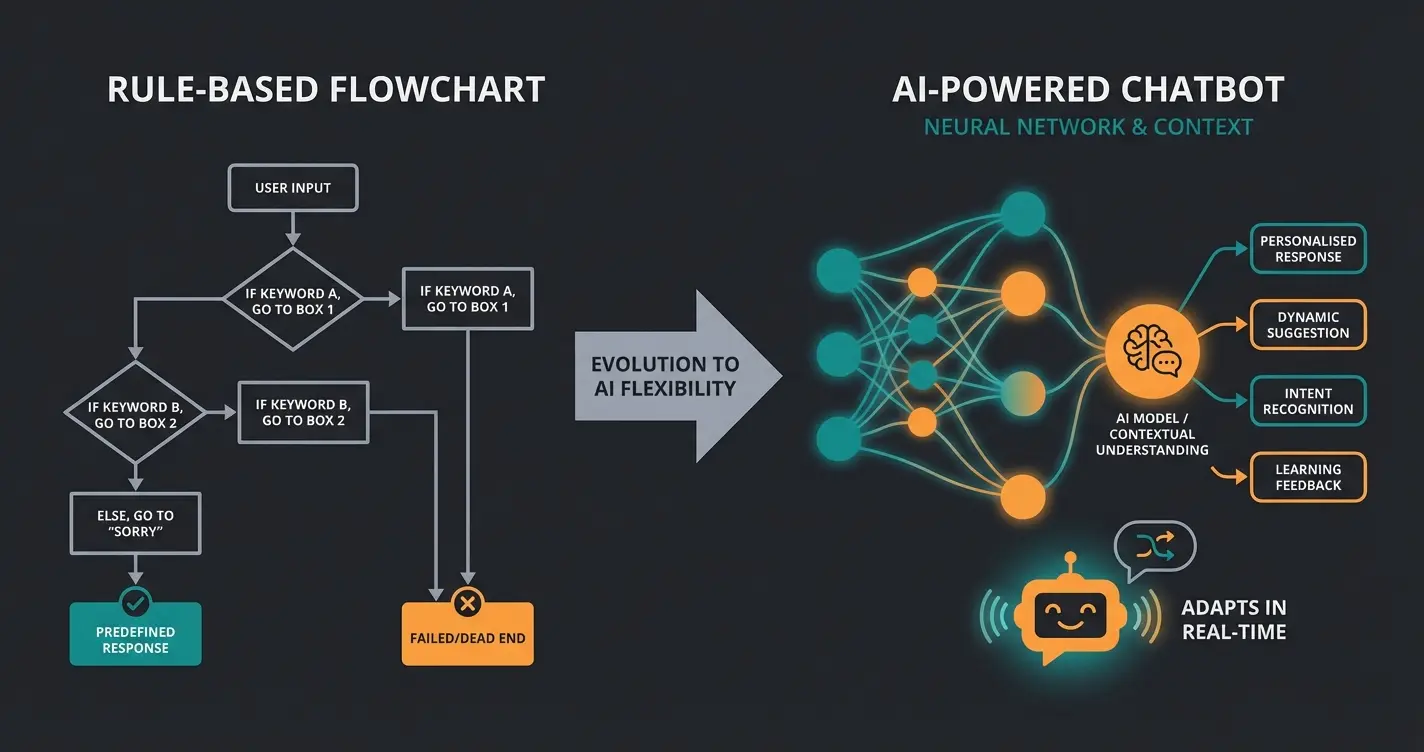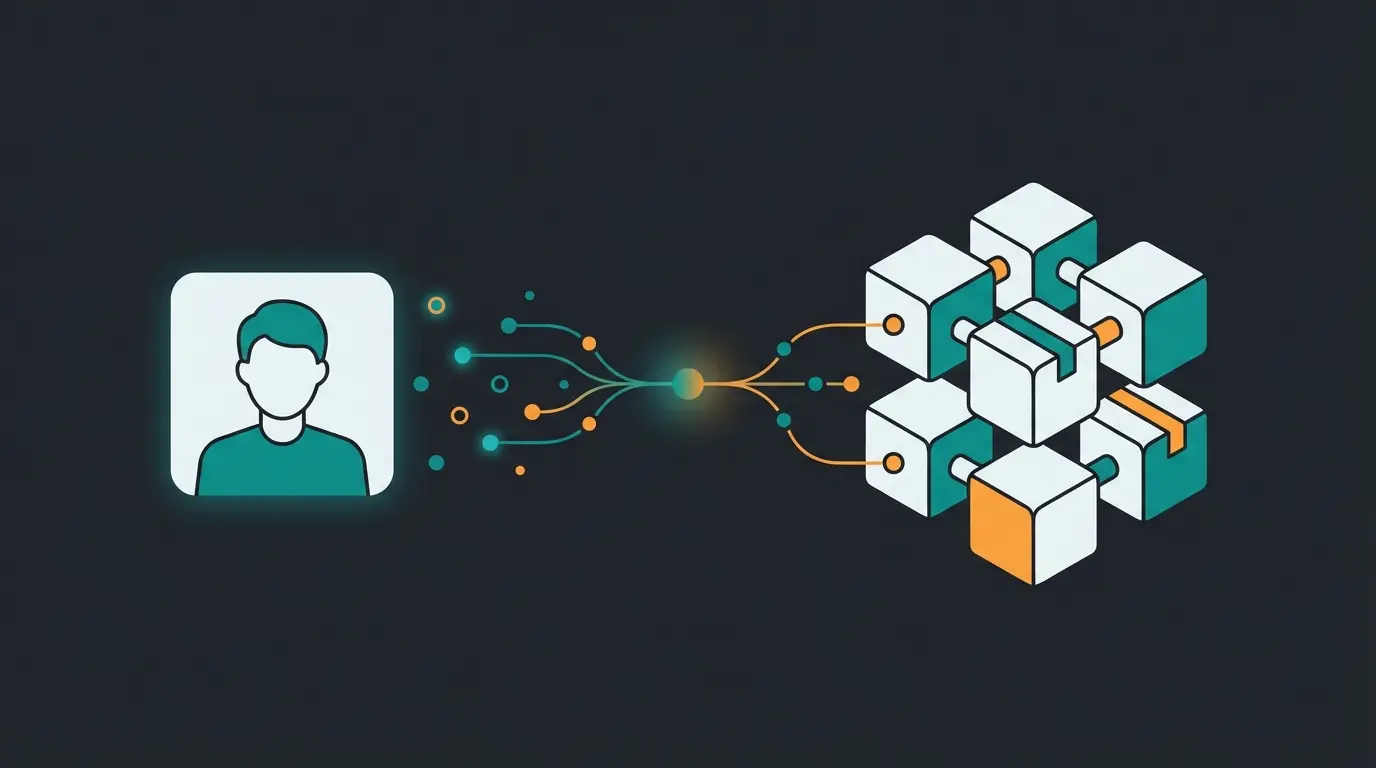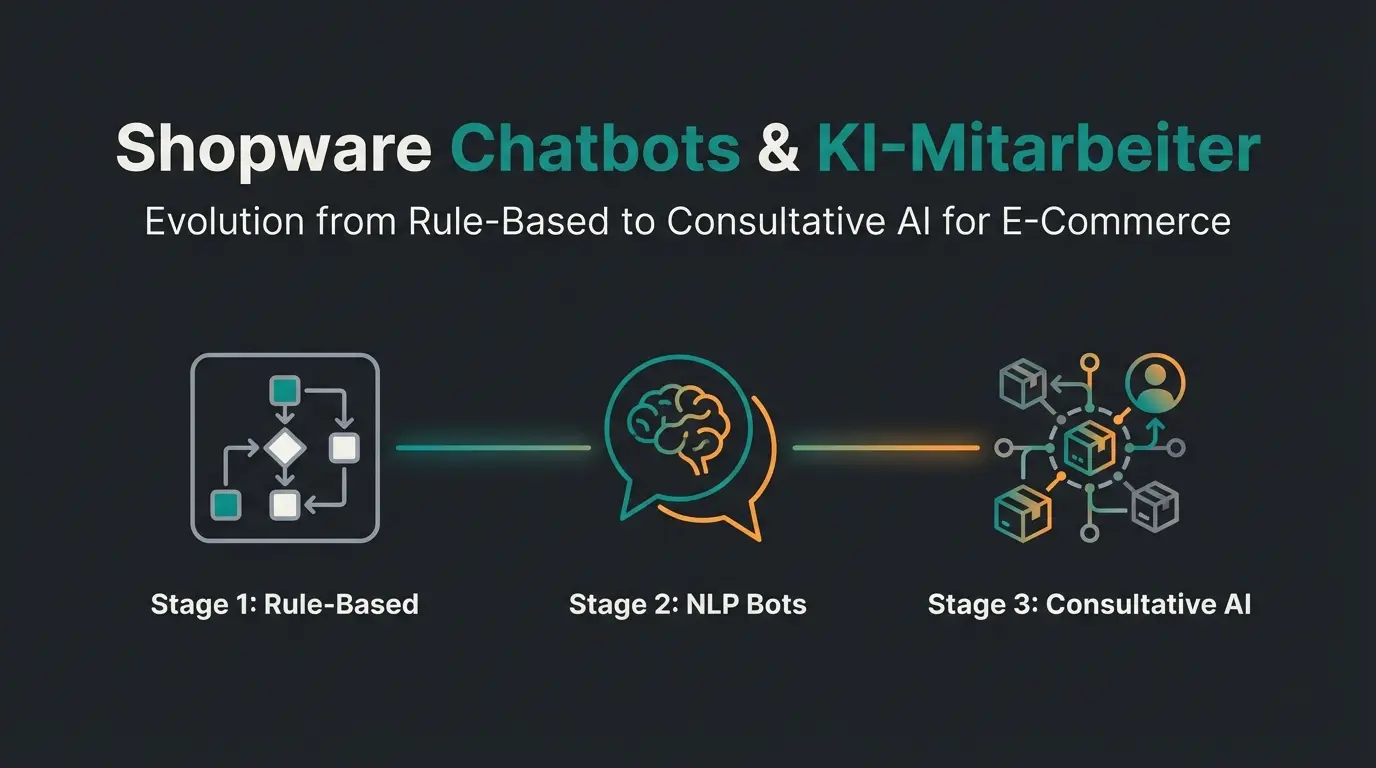Chatbot AI in E-Commerce: Why True Product Consultation is More Than Just Support Automation
Discover how Chatbot AI transforms simple support bots into powerful digital sales consultants. Learn the difference between rule-based bots and Conversational AI.
Introduction: The Evolution of Digital Dialogue
In our rapidly evolving digital world, chatbots have become an integral part of our online experiences. From customer service to personal assistants, we encounter them daily. However, a pressing question arises: Is every chatbot really AI? This question is not merely of academic interest; it has practical implications for our understanding and expectations of this technology—especially when applied to E-Commerce and digital sales.
Distinguishing between simple chatbots and true Chatbot AI is crucial for understanding the possibilities and limitations of these systems. In this article, we will explain the fundamentals of chatbots and AI, highlight their differences, and look at the future of these technologies, specifically focusing on how they are shifting from simple support tools to powerful Product Consultation engines.
What is a Chatbot? Defining the Basics
A chatbot is a computer-based program developed to simulate human conversations. These digital assistants are designed to respond to user inputs and offer information or support. The functionality of chatbots can range from simple, rule-based systems to more complex, learning-capable models.
There are various types of chatbots that differ in their complexity and capabilities. Qualimero offers a detailed overview of the different chatbot types, ranging from simple, script-based bots to advanced, AI-supported systems. Understanding this spectrum is the first step in selecting the right tool for your business.
Chatbots are used in numerous areas, including:
- Customer Service: Answering frequently asked questions and assisting with simple issues.
- E-Commerce: Product recommendations and checkout processing (Digital Sales).
- Healthcare: Appointment scheduling and initial health assessments.
- Education: Supporting learners with information and exercises.
The acceptance of digital chat services has increased across all generations in recent years. A study by McKinsey shows that 74-82% of customers across all age groups use live chat or messaging services for customer service inquiries. This underscores the growing importance of chatbots in digital communication.
Despite this broad acceptance, it is important to understand that not all chatbots are created equal and that the term "chatbot" does not automatically imply artificial intelligence. To better understand the differences, we must first look at the foundations of artificial intelligence.

Fundamentals of Artificial Intelligence
Artificial Intelligence (AI) is a fascinating and complex field of computer science concerned with the development of intelligent machines. At its core, it is about creating systems that exhibit human-like cognitive capabilities.
AI encompasses various subfields, with two standing out in the context of chatbots:
- Machine Learning: Algorithms that learn from data and improve their performance without being explicitly programmed.
- Deep Learning: A subset of machine learning based on artificial neural networks, particularly effective in processing large amounts of data.
The historical development of AI dates back to the 1950s. Since then, it has made impressive progress. Today, AI is used in numerous areas, from voice recognition to autonomous driving to medical diagnosis.
A key aspect of modern AI systems is their ability to process natural language (NLP). This technology allows machines to understand, interpret, and respond to human language. NLP forms the foundation for many advanced chatbots and digital assistants.
Differences Between Traditional Chatbots and AI
Although chatbots and AI are often mentioned in the same breath, there are significant differences between these technologies. A direct comparison of chatbots and AI systems reveals clear differences in functionality, learning ability, flexibility, and complexity.
Traditional chatbots mostly work on a rule-based basis. They follow pre-programmed response patterns and can only react to specific, pre-defined inputs (often called "Click-flows"). Their answers are rigid, and their ability to understand context is limited.
AI systems, on the other hand, are far more flexible and adaptable. They use machine learning techniques to learn from interactions and continuously improve their performance. AI can understand nuances in language, consider context, and respond meaningfully to unexpected inputs.
| Feature | Rule-Based Service Bot | AI Sales Consultant |
|---|---|---|
| Primary Goal | Deflect Support Tickets (Cost Reduction) | Guide Purchase Decisions (Revenue Gen) |
| Input Handling | Buttons & Keywords | Natural Language & Intent |
| Context Awareness | Low (forgets previous messages) | High (remembers preferences) |
| Outcome | Provides a link or FAQ answer | Recommends a specific product |
Another important difference lies in the depth of processing. While simple chatbots often only recognize keywords, AI systems can analyze the semantic content of sentences. This allows for a deeper understanding of user queries and more precise answers.
Limitations of Classic Bots vs. AI Strengths
The limits of classic chatbots become particularly clear with:
- Complex Inquiries: Chatbots often fail at multi-part or unusual questions.
- Context Understanding: They cannot take the conversation history into account.
- Learning Ability: Classic chatbots do not learn from interactions.
- Language Understanding: They struggle with synonyms, slang, or typos.
AI systems overcome many of these limitations. They can learn from data, recognize patterns, and improve their performance over time. This enables more natural, context-related, and intelligent interactions.
Stop frustrating customers with rigid menus. Implement a true AI consultant that understands needs and drives sales.
See AI Consultation in ActionConversational AI: The Bridge Between Support and Sales
While classic chatbots and artificial intelligence are often viewed as separate technologies, Conversational AI forms a bridge between these two worlds. This advanced technology combines the best elements of chatbots and AI systems to enable more natural and effective conversations.
Conversational AI uses complex machine learning algorithms and Natural Language Processing (NLP) to better understand and respond to human interactions. Unlike simple rule-based chatbots, Conversational AI can grasp contexts, understand nuances, and adapt to new situations. This is where the magic of Digital Product Consultation happens.
User Request: 'I need a laptop for video editing.' AI identifies intent + category.
AI asks relevant follow-up: 'Do you prefer Mac or Windows? What is your budget?'
AI scans the Product Feed (PIM) for attributes matching the user's constraints.
AI suggests 2-3 specific products with arguments: 'This model has the GPU power you need.'
The evolution from chatbots to Conversational AI brings several decisive advantages:
- Improved Understanding: Conversational AI can better grasp complex inquiries and the intent behind the user's words.
- Context Awareness: These systems can consider previous interactions and continue conversations across multiple sessions.
- Personalization: By learning from interactions, Conversational AI can consider individual preferences and deliver tailored answers.
- Multimodal Communication: Advanced systems can process and combine text, voice, and even visual inputs.
Are Modern Chatbots Truly AI?
The question of whether modern chatbots can be considered true artificial intelligence cannot be answered simply with yes or no. It depends heavily on how we define AI and what criteria we apply for "true" AI.
Simple, rule-based chatbots that respond to predefined inputs with set answers definitely do not fall into the category of artificial intelligence. They possess no learning ability and cannot act beyond their programmed rules.
Modern, advanced chatbots, however, increasingly integrate AI technologies such as machine learning and NLP. These systems can learn from interactions, adapt to new situations, and understand complex language patterns. They thus approach the capabilities we typically associate with AI.
To be considered "true" AI, chatbots should fulfill several criteria:
- Learning Ability: The system should learn from experiences and adapt its behavior.
- Natural Language Understanding: It should be able to grasp complex linguistic nuances and contexts.
- Problem-Solving Ability: The system should be able to solve new, unknown problems.
- Adaptability: It should be able to adapt to changing environments and requirements.
Many modern chatbots fulfill some of these criteria, but few fulfill all of them completely. The functionality of AI chatbots shows that the technology is constantly evolving, and the boundaries between chatbots and AI are increasingly blurring.
Future Perspectives: AI-Supported Chatbots
The integration of AI technologies into chatbots opens up fascinating future perspectives for human-machine communication. While classic chatbots are often limited to pre-programmed answers, AI-supported systems enable a far more natural and context-related interaction.

Some promising application scenarios for future AI-supported chatbots include:
- Hyper-Personalization: AI chatbots will learn individual user preferences and behaviors to offer tailored recommendations and solutions.
- Multimodality: Advanced systems will be able to process and combine text, voice, and image inputs.
- Emotional Intelligence: Future AI chatbots will be able to recognize moods and respond empathetically.
- Proactivity: Instead of just reacting to requests, AI chatbots will proactively offer help and anticipate potential problems.
Projected global chatbot market size.
Annual growth rate from 2022 to 2032.
The technological advances in areas such as Natural Language Processing and machine learning are driving these developments. Experts expect AI chatbots to increasingly take over complex tasks and function as virtual assistants in various areas of life. According to Statista, the global chatbot market is expected to grow from about 5 billion US dollars in 2022 to an impressive 42 billion US dollars by 2032.
Ethical Considerations and Implementation Challenges
With the increasing spread and performance of AI-supported chatbots and Conversational AI, important ethical questions and challenges arise that must be considered, particularly for businesses operating in strict regulatory environments like the EU (GDPR).
- Data Privacy (GDPR): Processing large amounts of personal data requires robust security measures and transparency towards users.
- Transparency: It must be clearly communicated when a user is interacting with an AI system and what capabilities it possesses.
- Accountability: In the event of errors or problematic outputs from AI systems, it must be clear who bears the responsibility.
- Bias: AI systems can unintentionally reinforce prejudices or discrimination if they are not carefully developed and monitored.
The implementation of generative AI, as used in modern chatbots, carries additional risks. A study by McKinsey shows that 75% of respondents expect generative AI to cause significant or disruptive changes in their industry within three years. However, only 21% of organizations have established guidelines for the use of generative AI by employees.
To overcome these challenges, close cooperation between technology developers, ethics experts, and regulatory authorities is required. Only in this way can it be ensured that AI-supported chatbots and Conversational AI systems are used responsibly and for the benefit of society.
Conclusion: The Future is Consultative
The question "Is a chatbot really AI?" cannot be answered with a blanket statement. While simple, rule-based chatbots do not count as true artificial intelligence, advanced Conversational AI systems are approaching the capabilities of true AI more and more.
For businesses and consumers, understanding the possibilities and limitations of these technologies is becoming increasingly important. While chatbots are already providing valuable services in areas such as customer service, the further integration of AI will expand their capabilities into true Digital Product Consultation.
Ultimately, the distinction between chatbots and "true" AI remains fluid and is constantly evolving. The businesses that win will be those that stop asking "Is it AI?" and start asking "Does it help my customer buy the right product?"
A traditional chatbot often follows rigid rules (click paths), whereas Conversational AI uses Natural Language Processing (NLP) to understand intent, context, and nuances, enabling a free-flowing conversation.
Yes. By connecting to your product catalog, 'Consultative AI' can perform a needs analysis, filter inventory, and recommend specific products just like a human sales assistant, significantly increasing conversion rates.
It can be. Compliance depends on the software provider and implementation. It is crucial to choose a provider that hosts data in the EU and offers transparent data processing policies.
Costs vary widely based on complexity. Simple support bots are cheaper, while sophisticated Sales AI integrated with PIM/Shop systems requires a higher investment but typically offers a much higher ROI through increased sales.
Don't settle for basic support automation. Implement a Conversational AI that acts as your top-performing sales consultant, 24/7.
Start Your Free Trial
